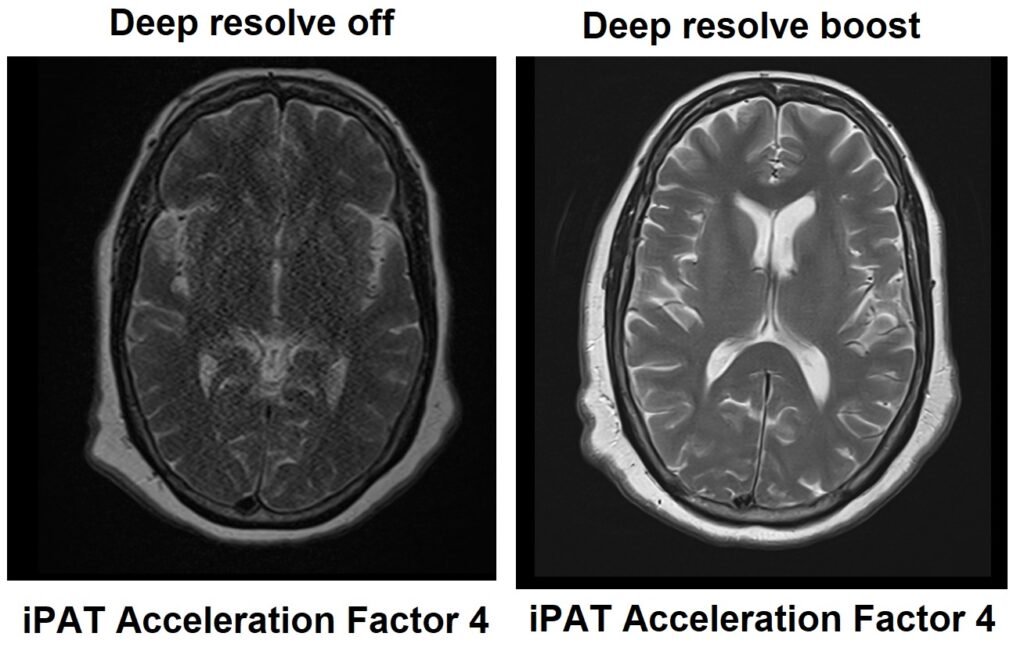Starry-sky artifact
The ‘starry-sky artifact’ is one of the unique imaging artifacts associated with the parallel imaging or Compressed SENSE technique used in MRI. This artifact manifests as grainy, pixelated noise, often resembling small circular or semi-circular rings and streaks. The resulting image can resemble a starry night sky, with countless points of light scattered throughout. This artifact tends to be more prominent at the center of the image.
These artifacts are not consistently present and can vary in intensity and frequency. Their occurrence depends on factors such as the specific MRI sequence used and the settings of parallel imaging or Compressed SENSE, including factors like denoising levels. In sequences with low contrast-to-noise ratios, these artifacts may become more noticeable due to undersampling in the k-space.

Below are a few approaches to deal with these artifact:
- Optimize Coil Selection: Ensure that you are using the appropriate high-channel MRI coils for the specific anatomical region you are imaging. High-channel coils can provide better signal-to-noise ratio (SNR) and help reduce artifacts.
- Adjust iPAT Acceleration Factor: Reducing the iPAT acceleration factor can help improve image quality by minimizing artifacts. iPAT acceleration is a form of parallel imaging that can introduce artifacts if set too high. Experiment with lower iPAT factors to determine the best balance between scan time and image quality.

- Increase NEX (Number of Excitations): Increasing the NEX effectively averages multiple acquisitions, which can help reduce noise and improve image quality. However, keep in mind that this will increase scan time. Find the appropriate NEX value that balances image quality and patient comfort.
- Deep Resolve Software: The Deep Resolve software have specific settings and parameters that can be adjusted to mitigate artifacts. Consult the user manual or reach out to the software manufacturer or vendor for guidance on optimizing the software for artifact reduction.

References:
- Sartoretti, T., Reischauer, C., Sartoretti, E., Binkert, C., Najafi, A., & Sartoretti-Schefer, S. (2018). Common artefacts encountered on images acquired with combined compressed sensing and SENSE. Insights in Imaging, 9(6), 1107–1115. doi: 10.1007/s13244-018-0668-4. PMID: 30411279. PMCID: PMC6269339.
